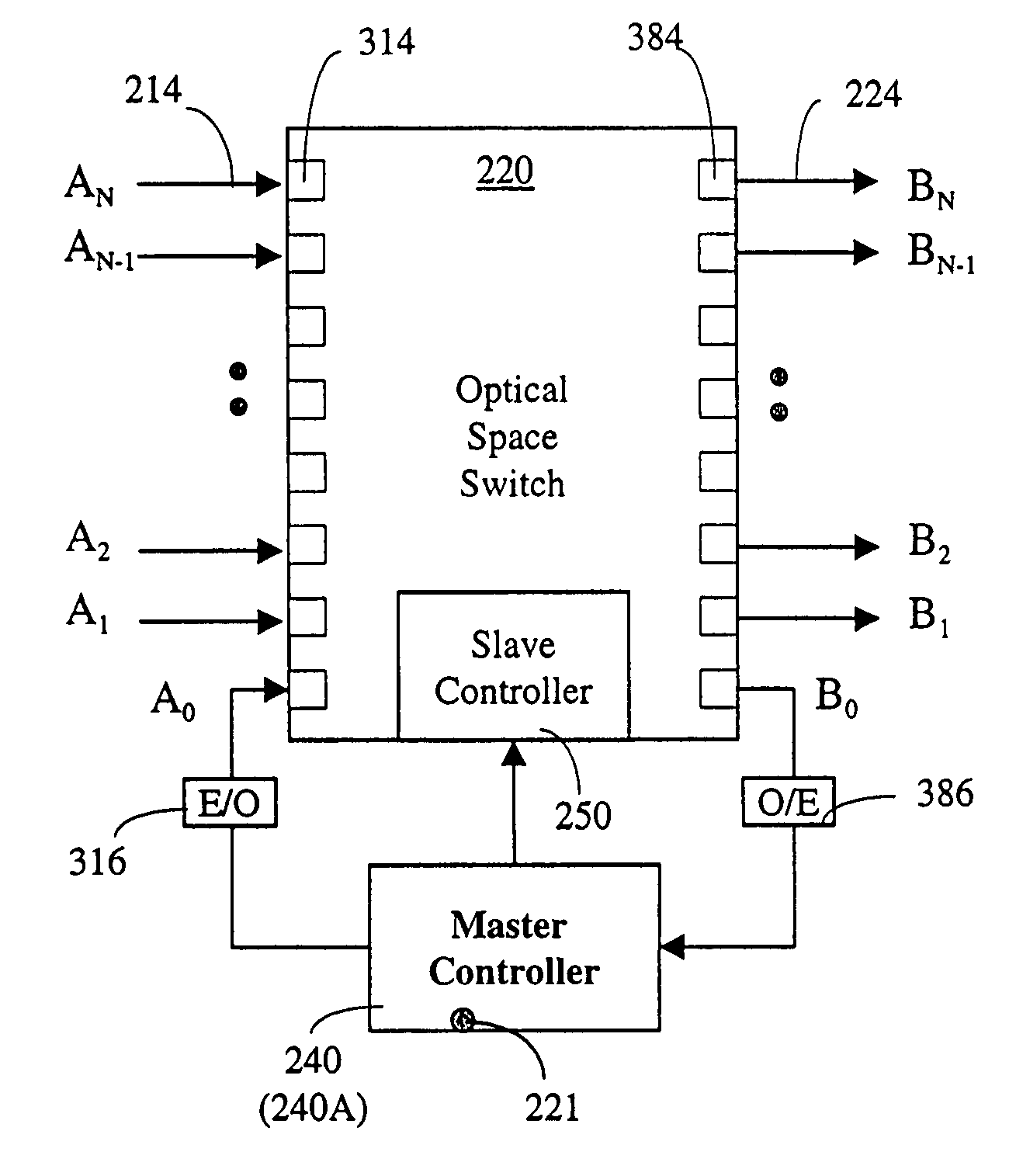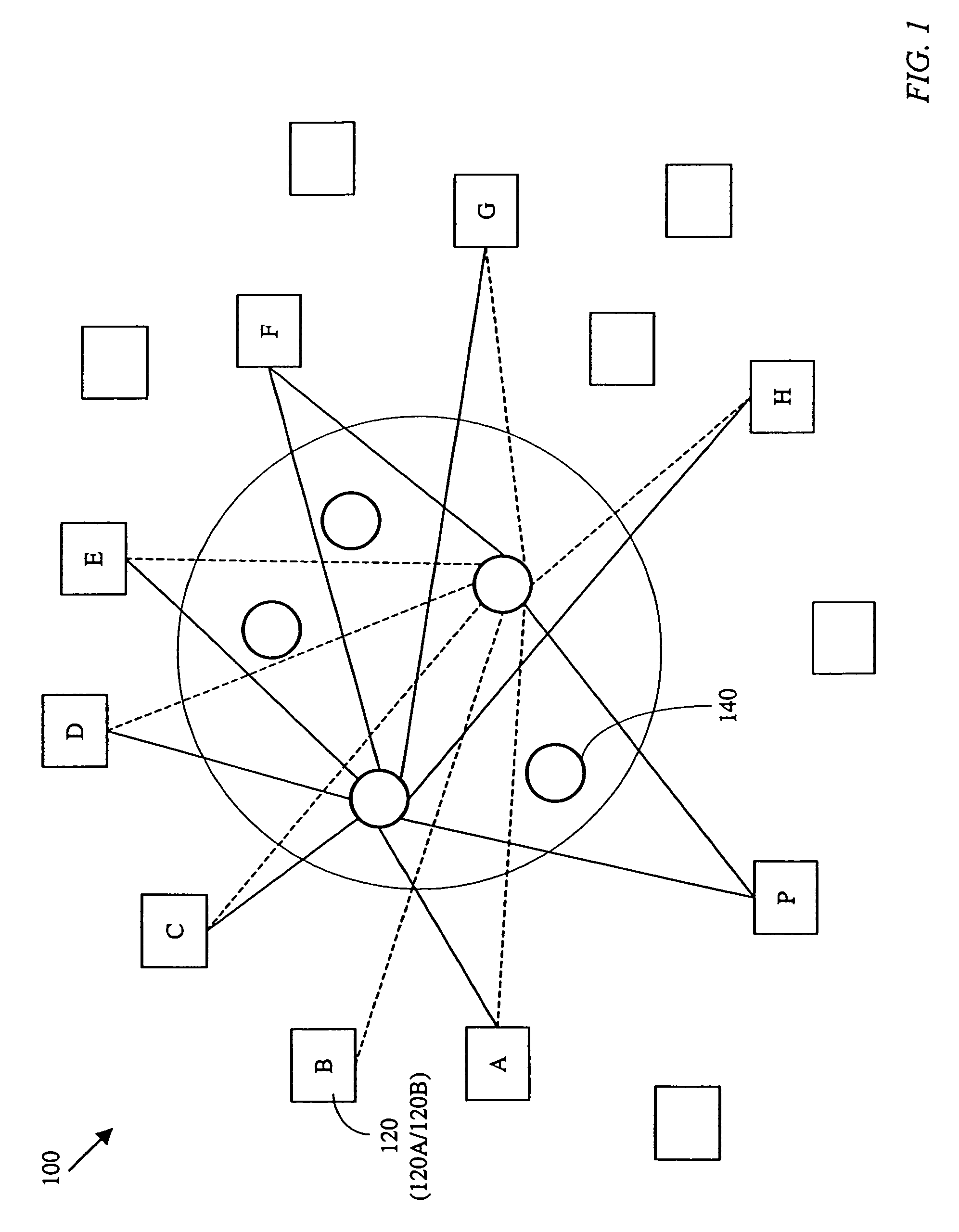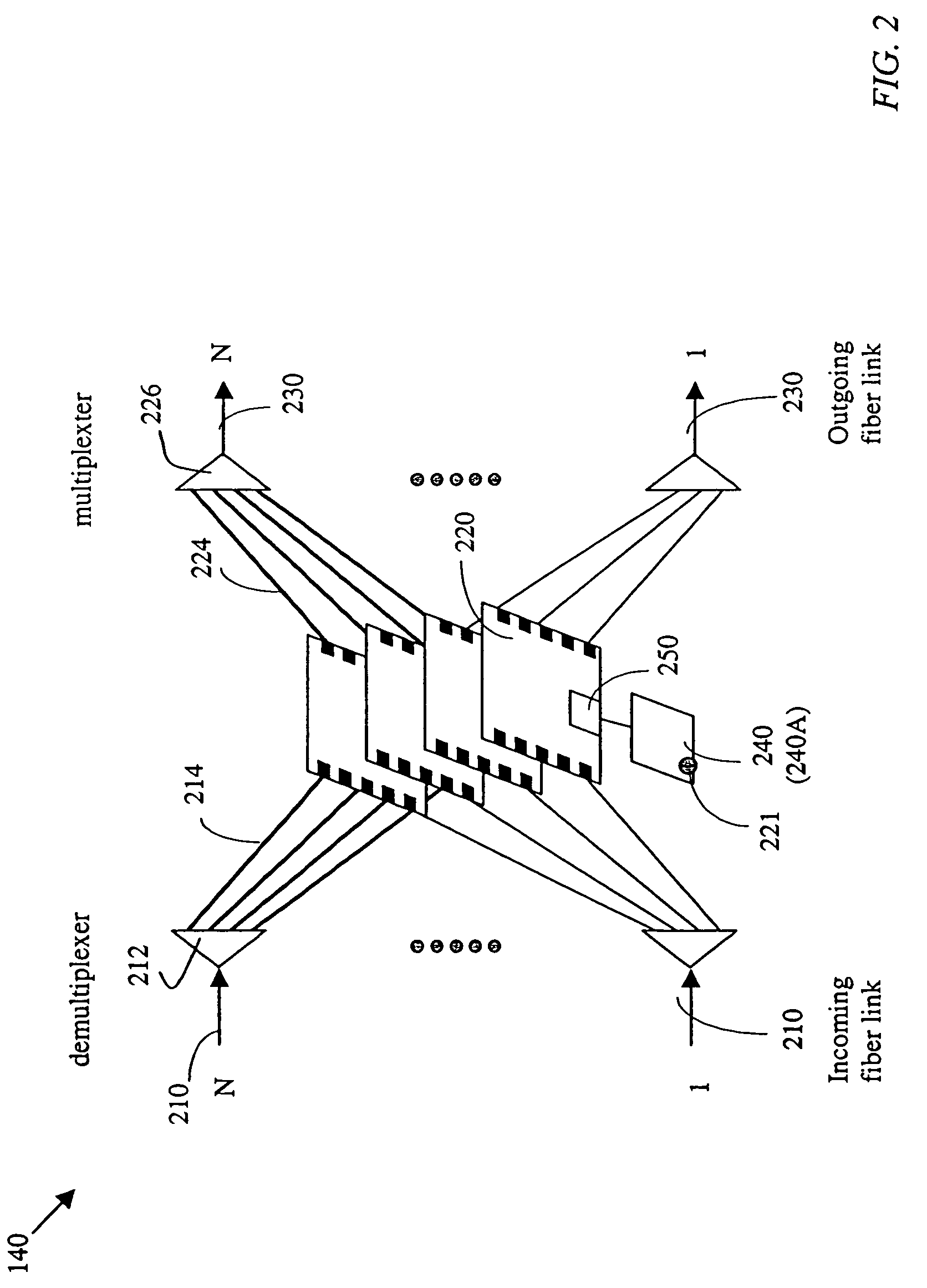Time-coordination in a burst-switching network
a burst-switching network and time-coordination technology, applied in the field of data networks, can solve the problems of burst loss, burst loss, burst loss,
- Summary
- Abstract
- Description
- Claims
- Application Information
AI Technical Summary
Benefits of technology
Problems solved by technology
Method used
Image
Examples
Embodiment Construction
[0054]A star network's main attraction is its high performance and simplicity of control.
[0055]However, it is suitable only for limited geographic or topological coverage. A composite star network 100, illustrated in FIG. 1, may be viewed as a superposition of several star networks which are merged only at the edge nodes 120 while the core nodes 140 can be widely distributed and independent. An edge node 120 comprises a source node 120A and an associated sink node 120-B. Hereinafter, reference to an edge node 120 also implies reference to the source node 120A and the sink node 120B that constitute the edge node 120. Similarly, reference to a source node 120A or a sink node 120B implies reference to the edge node 120 to which either belongs. The core nodes 140 of a composite-star network are not connected to each other. The composite-star network 100 retains the attractive properties of a star network while providing a wide geographic and topological coverage. The composite-star netw...
PUM
 Login to View More
Login to View More Abstract
Description
Claims
Application Information
 Login to View More
Login to View More - R&D
- Intellectual Property
- Life Sciences
- Materials
- Tech Scout
- Unparalleled Data Quality
- Higher Quality Content
- 60% Fewer Hallucinations
Browse by: Latest US Patents, China's latest patents, Technical Efficacy Thesaurus, Application Domain, Technology Topic, Popular Technical Reports.
© 2025 PatSnap. All rights reserved.Legal|Privacy policy|Modern Slavery Act Transparency Statement|Sitemap|About US| Contact US: help@patsnap.com



